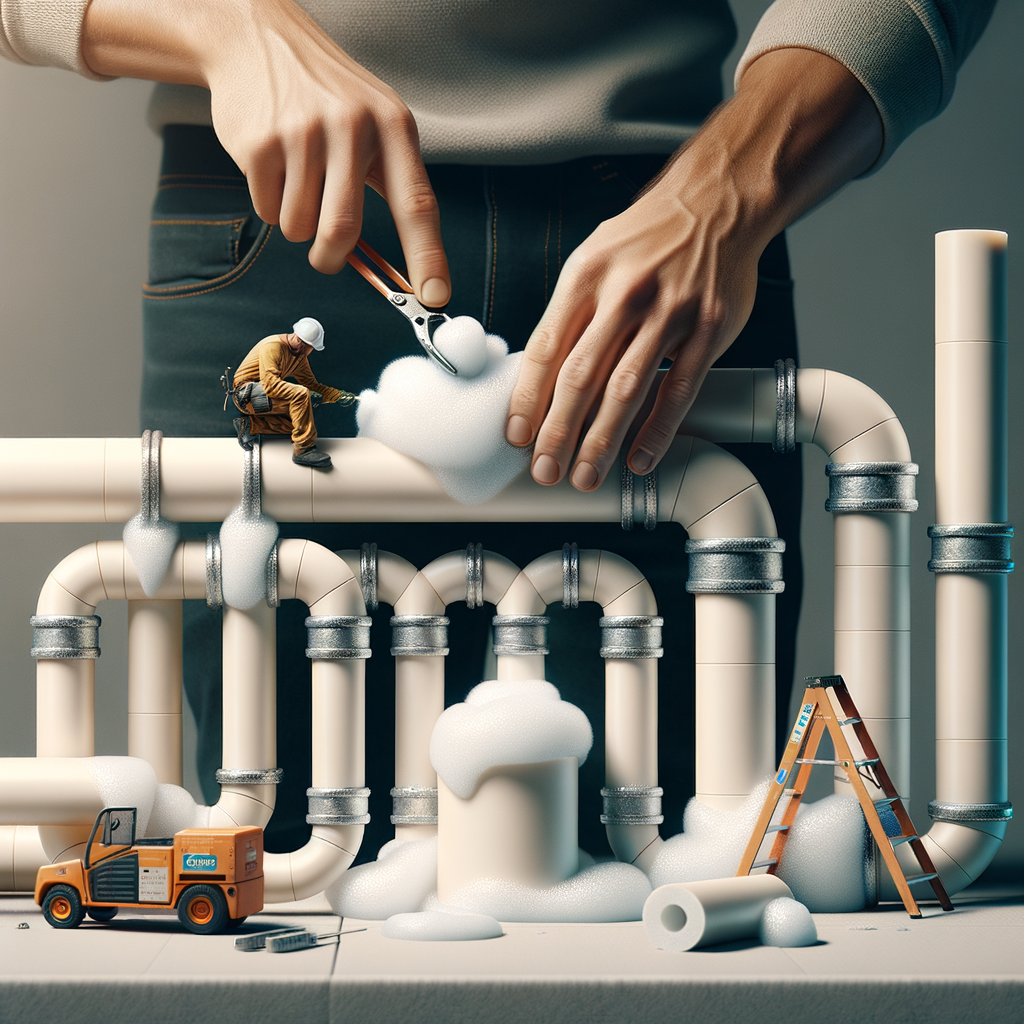DIY Tips for Insulating Pipes with Reflective Foam

DIY Tips for Insulating Pipes with Reflective Foam
Insulating your pipes is a simple yet essential maintenance task that can save you money on energy bills and prevent costly repairs caused by freezing in winter. Reflective foam pipe insulation offers an effective, easy-to-install solution for DIY enthusiasts, tradespeople, and homeowners alike. In this guide, we'll walk through practical tips and best practices for insulating pipes with reflective foam, ensuring your home stays warm and efficient.
Why Insulate Pipes?
Pipe insulation serves multiple purposes: it maintains water temperature, reduces heat loss, prevents pipes from freezing, and minimises condensation issues. For those who rely on direct access to hot water or want to improve energy efficiency, insulating pipes is a smart, straightforward upgrade.
Choosing the Right Insulation Material
Reflective foam pipe insulation combines insulation foam with a reflective foil lining. Its properties make it particularly suitable for pipe sections exposed to cold environments, such as garages, lofts, and external walls.
Benefits of Reflective Foam
- Excellent thermal barrier: Reflects radiant heat, reducing heat loss.
- Easy to install: Flexible and easy to cut with scissors or a knife.
- Moisture resistant: Helps prevent condensation.
- Cost-effective: Offers good insulation at an economical price.
For optimal results, measure your pipe lengths accurately before purchasing and select the appropriate diameter of insulation to fit snugly around your pipes.
Step-by-Step Guide to Installing Reflective Foam Pipe Insulation
1. Measure and Cut
Use a tape measure to determine the length of each pipe section you plan to insulate. Cut the reflective foam to size, ensuring some overlap at the seams for a tight fit.
2. Prepare the Surface
Make sure the pipes are clean and dry. Remove any dust or debris that might reduce adhesion or make installation difficult.
3. Fit the Insulation
Unroll the foam insulation and slide it over the pipe, making sure it encases the entire length. If your pipe has bends or fittings, cut the foam to shape, allowing for a snug fit.
4. Secure the Insulation
Use insulation tape or reflective tape along the seams and at joints to secure the foam in place. Some foam products come with adhesive backs; if so, peel and stick accordingly.
5. Seal the Edges and Joints
Ensure all joints are sealed properly to prevent heat leaks. Use foil tape or appropriate insulation tape, and press firmly to create an airtight seal.
6. Check and Maintain
After installation, inspect periodically for damage or wear, especially after severe weather. Replace any damaged sections promptly to maintain insulation performance.
Additional Tips for Effective Pipe Insulation
- Insulate both hot and cold pipes: Hot pipes should be insulated to prevent heat loss, and cold pipes to prevent condensation.
- Insulate accessible pipes first: Focus on exposed sections in vulnerable areas.
- Combine with other insulation solutions: For added protection, consider thicker or dual-layer insulation in extreme climates.
Troubleshooting Common Issues
- Loose fitting insulation: Ensure the foam is snug; use additional tape if necessary.
- Condensation build-up: Ensure reflective foil faces inward and that fittings are sealed.
- Difficult bends: Use flexible foam or cut sections into smaller pieces for tight turns.
Why DIY Pipe Insulation Matters
Not only does insulating your pipes with reflective foam give you peace of mind during cold spells, but it also maximises energy efficiency by reducing heat loss. Whether you're a seasoned tradesperson or a DIY homeowner, installing reflective foam insulation is a straightforward, cost-effective project that delivers long-term benefits.
Explore Our Range
Ready to insulate your pipes? Check out our selection of reflective foam pipe insulation at Cynnal perfect for DIYers and professionals alike.
Final Word
With proper planning and a few simple steps, insulating pipes with reflective foam is within every DIYer's reach. Protect your home from freezing, save money on energy bills, and enjoy greater peace of mind. For high-quality products and expert advice, explore the full range of insulation options at Cynnal.
Stay warm and keep your pipes protected—start your DIY project today!